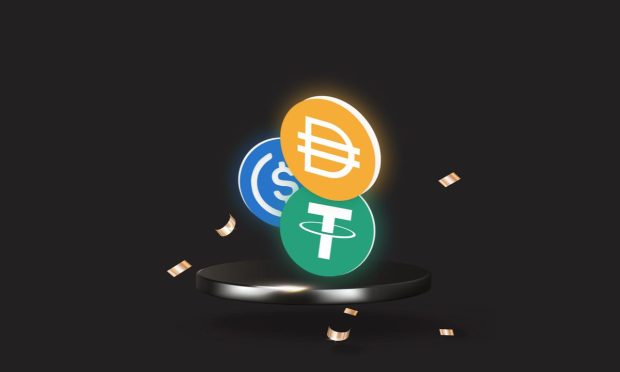Fed Paper Finds Stablecoin Risks Are Manageable, and Come With Rewards

In a new paper on the potential uses and dangers of stablecoins, Federal Reserve researchers come to a fairly clear conclusion that the safest way to bring these dollar-pegged cryptocurrencies into the mainstream is to ensure that they are backed one-to-one by cash deposits in banks.
While the paper, “Stablecoins: Growth Potential and Impact on Banking,” repeatedly notes that it is not making policy recommendations, and that the scenarios it considered are limited, the outcome is pretty clear.
The two-tiered intermediation strategy in which stablecoin issuers hold the reserves backing their digital assets in cash deposited with commercial banks is the only one that does not potentially cut into banks’ balance sheets or reduce the amount of deposit-backed credit available, it found.
This assumes that banks are allowed to treat that cash like any other deposit, loaning it out with the same 10% reserve requirement as any other deposit.
While the possibility of depositing those stablecoin reserves directly at the Federal Reserve bank has been discussed for some time, researchers Gordon Liao and John Caramichael come to the conclusion that this narrow-bank solution “poses the largest risk of credit disintermediation” as it would drain commercial banks’ deposits and ability to offer credit.
The third scenario, one in which stablecoin reserves are used to buy securities, is not actually damaging. Rather, the report casts its impact as the “the most difficult to anticipate,” as the securities sellers would presumably deposit most of that cash in banks anyway. However, it also assumes that the stablecoin issuers would purchase the securities from those commercial banks rather than directly from the securities industry.
The President’s Working Group on Financial Markets Report on Stablecoins, issued in November, urged Congress to limit stablecoin issuance to insured depository institutions.
Learn more: President’s Working Group: Stablecoin Risks Warrant Legislation
Confidence Required
The last scenario is roughly the system used by the top stablecoin issuer, Tether, whose USDT is backed more than 50% by commercial paper and just 2.9% by cash.
See: What Senate Banking Committee Chair Sherrod Brown Should Be Asking Tether
However, Liao and Caramichael note that “the full backing and soundness of some public reserve-backed stablecoins have been called into question.”
Specifically, they point to Tether, which recently paid a $41 million fine to the Commodity Futures Trading Commission (CFTC), “which alleged that Tether misrepresented the sufficiency of its dollar reserves,” they note. That arose out of a fraud investigation by the New York Attorney General, which was settled for $18 million.
Read more: Tether Must Pay $41M After Misleading Customers About Stablecoin Backing
This is a problem with the potential to spill over into the broader financial markets they note, as a loss of “confidence in the soundness of a stablecoin’s backing, a run dynamic could ensue. A run on a stablecoin poses a risk of spillovers to other asset classes, as stablecoin reserves are sold off or unloaded to meet the redemption demand.”
It calls for regulations requiring financial audits of stablecoin issuers reserves, saying they believe “this type of instability is addressable with proper institutional and/or regulatory guardrails such as transparent financial audits and adequate requirements on the liquidity and quality of stablecoin reserves.
With these concerns resolved, Liao and Caramichael argue that “dollar-pegged stablecoins backed by adequately safe and liquid collateral can potentially serve as a digital safe haven currency during periods of crypto market distress.”
They conclude by pointing out that while stablecoins are currently primarily for cryptocurrency trading, a limited amount of peer-to-peer payments and decentralized finance (DeFi), they have great potential.
“Stablecoins may see further growth through their facilitation of more inclusive payments and financial systems, the tokenization of financial markets, and possible next-generation innovations such as Web 3,” they added.